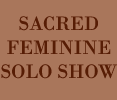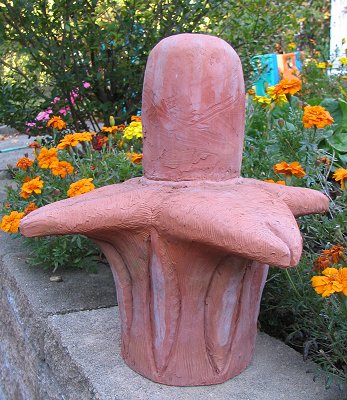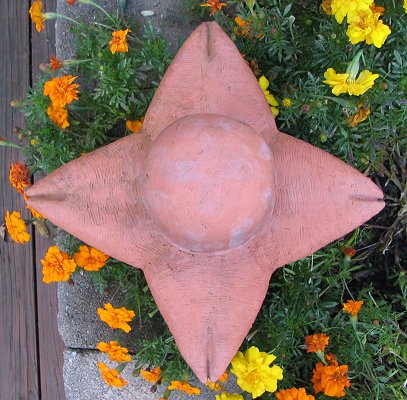
|
|
|
|
About the Piece I started this piece in the later part of 2006 shortly after starting Jana and finished it in February of 2007. Just about every temple I visited in India had a Shiva Linga in it. I am captivated by this ubiquitous symbol that is embedded in the iconographic images in India’s collective history. I am intrigued that with many of the Shiva Linga I saw the linga portion sometimes looked like a cosmic egg and evoked the feminine which is inherent in the egg symbol and evokes female characteristics of birth and renewal. Conversely, the linga portion of the Shiva Linga sometimes took on a more phallic shape and was less rounded. I wondered that some artists would portray the male aspect through a feminine symbol: the cosmic egg, and others would choose a more angular presentation which is traditionally more masculine. In addition, I have been missing India fiercely and am trying to sooth myself by bringing as much of India to my home as I can. So, I made my own Shiva Linga to put in my flower garden. I started this piece by intersecting two yonic, or almond shapes. Into the center of this “cross” I placed the cosmic egg. The Shiva Lingas that I saw in India had only one spout. I made four spouts that will face the four directions. I don’t know why I chose the four spouts to face the cardinal directions, but it just seemed to make sense to me. Also, I liked the way the four spouts, when viewed from above, evoked the shape of an equal armed cross, or Greek cross mentioned by Dan Brown (2003) in his book The Da Vinci Code: “The head of this key was not the traditional long-stemmed Christian cross but rather was a square cross—with four arms of equal length—which predated Christianity by fifteen hundred years. This kind of cross carried none of the Christian connotations of crucifixion associated with the longer-stemmed Latin Cross, originated by Romans as a torture device. Langdon was always surprised how few Christians who gazed upon “the crucifix” realized their symbol’s violent history was reflected in its very name: “cross” and “crucifix” came from the Latin verb cruciare—to torture.” …equal-armed crosses like this one are considered peaceful crosses. Their square configurations make them impractical for use in crucifixion, and their balanced vertical and horizontal elements convey a natural union of male and female…” (p. 145). Barbara Walker (1998) also references a cross, shaped within a square, called a “cross Patee”, or “cross formee”. (p. 48) Carl Jung (1964) also differentiates between the Greek and Latin cross: “Up to Carolingian times, the equilateral or Greek cross was the usual form, and therefore the mandala was indirectly implied. But in the course of time the center moved upward until the cross took on the Latin form, with the stake and the crossbeam, that is customary today. This development is important because it corresponds to the inward development of Christianity to the high Middle Ages. In simple terms, it symbolized the tendency to remove the center of man and his faith from the earth and to “elevate” it into the spiritual sphere. This tendency springs from the desire to put into action Christ’s saying: “My kingdom is not of this world” Earthly life, the world, and the body were therefore forces that had to be overcome.” (p. 273) |



